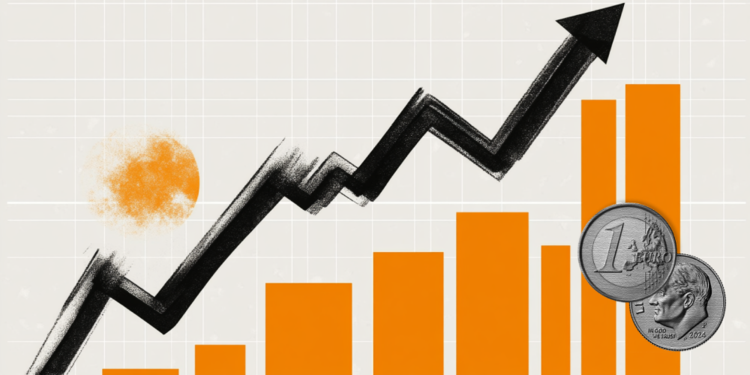- The Dow Jones fell more than three-quarters of a percentage point on Friday.
- Stocks are paring recent election-driven gains.
- US retail sales beat forecasts, but still grew by a smaller amount in October.
The Dow Jones Industrial Average (DJIA) pared its recent bullish streak, declining more than 350 points and returning approximately 0.85% as investors grapple with an increasingly uncertain future. US retail sales beat expectations but still retreated from previous numbers, and Federal Reserve (Fed) Chairman Jerome Powell poured cold water on investors hungry for rate cuts this week. week when he reaffirmed that the Fed was in “no rush” to cut interest rates further.
The post-election “Trump rally” is set to continue unraveling as the Trump campaign begins filtering out potential candidates for key official positions that former President Donald Trump aims to install at the start of his second term in January. Pharmaceutical stocks took an unexpected hit on Friday after Trump’s team announced plans to nominate vaccine skeptic Robert F. Kennedy Jr. to lead the U.S. Department of Health and Human Services. RFK Jr. has openly discussed its plans to ban several vaccines and other health products entirely, a surprisingly hyper-regulatory move that runs counter to the market’s initial enthusiasm for Trump’s election victory, which was supposed to lead to more deregulation efforts in the public market. .
US retail sales grew 0.4% month-on-month in October, slightly above the forecast of 0.3% but still below September’s revised figure of 0.8%. Core retail sales, or retail sales excluding auto purchases, fell short of expectations, growing just a meager 0.1% compared to the 0.3% expected and further below the revised 1.0 figure. % of the previous month.
Dow Jones News
Despite steep losses in major stocks, the Dow Jones is roughly balanced on Friday, with about half of the stocks listed on the main stock board in the green for the day. Disney (DIS) rose another 5.3% to $115 per share as the entertainment giant enjoys a firmer rebound in quarterly revenue than many investors anticipated. Meanwhile, Amazon (AMZN) and Amgen (AMGN) fell about 4.5% on the day to $201 and $282 per share, respectively, as technology and biomedical stocks take a hit at the end of the week.
Dow Jones Price Forecast
Despite a bearish extension on Friday that sent the Dow Jones deeper into the red for the week, there is still plenty of room to run lower before technical warnings start to emerge. Bullish pressure could also reappear on the charts at any time as investors remain hopeful of maintaining a firm grip on all-time high territory.
The Dow Jones is set to end the week down 1.3% despite setting another new record bid earlier this week at 44,485. The nearest technical barrier lies at the 50-day EMA near 42.430.
Dow Jones Daily Chart
The Dow Jones FAQs
The Dow Jones Industrial Average, one of the world’s oldest stock indices, is made up of the 30 most traded securities in the United States. The index is weighted by price rather than capitalization. It is calculated by adding the prices of the securities that comprise it and dividing them by a factor, currently 0.152. The index was founded by Charles Dow, also founder of the Wall Street Journal. In recent years it has been criticized for not being sufficiently representative, since it only follows 30 companies, unlike broader indices such as the S& P 500.
There are many factors that drive the Dow Jones Industrial Average (DJIA). The main one is the aggregate performance of its component companies, revealed in quarterly corporate earnings reports. US and global macroeconomic data also contribute, influencing investor sentiment. The level of interest rates, set by the Federal Reserve (Fed), also influences the DJIA, as it affects the cost of credit, on which many companies largely depend. Therefore, inflation can be a determining factor, as well as other parameters that influence the decisions of the Federal Reserve.
The Dow Theory is a method for identifying the main trend of the stock market developed by Charles Dow. A key step is to compare the direction of the Dow Jones Industrial Average (DJIA) and the Dow Jones Transportation Average (DJTA) and only follow trends where they are both moving in the same direction. Volume is a confirmation criterion. The theory uses elements of maximum and minimum analysis. The Dow theory proposes three phases of the trend: accumulation, when the smart money begins to buy or sell; public participation, when the general public joins the trend; and distribution, when the smart money abandons the trend.
There are several ways to trade the DJIA. One of them is to use ETFs that allow investors to trade the DJIA as a single security, instead of having to buy shares of the 30 companies that comprise it. A prominent example is the SPDR Dow Jones Industrial Average ETF (DIA). Futures contracts on the DJIA allow traders to speculate on the future value of the index, and options provide the right, but not the obligation, to buy or sell the index at a predetermined price in the future. Mutual funds allow investors to purchase a portion of a diversified portfolio of DJIA securities, providing exposure to the global index.
Source: Fx Street
I am Joshua Winder, a senior-level journalist and editor at World Stock Market. I specialize in covering news related to the stock market and economic trends. With more than 8 years of experience in this field, I have become an expert in financial reporting.







